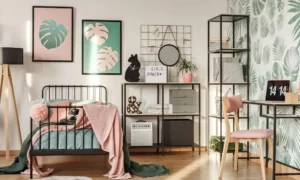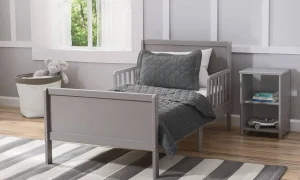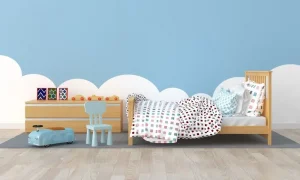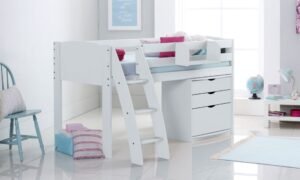Last updated on February 27th, 2024 at 07:04 am
Deciding on the color scheme and sticking to it throughout the house helps set a neat, unified tone for the entire place. On the other hand, adding colorful accents is perfect if you want to create a specific atmosphere in any given room.
Either way, the colors you choose to paint the walls or decorate the area can affect your mood and productivity — for example, picking pastel hues for the bedroom allows you to transform it into a calming and sleep-inducing environment.
For this reason, it is crucial to pay close attention when choosing color combinations for your kids’ study rooms. Below, we share several suggestions for energizing study room color palettes,
such as sticking to the neutrals except for one accent color, choosing seaside-inspired colors, mixing hot and cold hues, and including different shades of the same color. Continue reading to create an inspiring space that will help your kids concentrate and support them in their learning process!
Hot and Cool Colors
Suppose you want your kids’ study room to look more sophisticated and grown-up. In that case, you can pair hot colors with cool tones. For example, you can use red loose lay vinyl planks and blue furniture to create a lovely contrast. Alternatively, you can mix colors like purple and green. These color combinations are excellent for a kids’ study room because they give the space a powerful and engaging appearance, yet it still looks modern and elegant.
Energizing Accent Color
If you’re looking for a more dynamic study room color palette, choose one vibrant shade and pair it with neutral hues. The latter will keep the environment calm and allow the accent color to pop — for instance, blue looks fantastic when paired with white or light greys. You can also mix two different shades of the same color. We highly recommend going for warm and cool tones of blue.
Triple Take On the Same Color
It’s not a secret that using the same color throughout your house is a good idea to give it a timeless feel. However, instead of choosing just one hue, why not try out at least three different shades of the same color?
Doing so will create a harmonious and balanced environment where each shade complements the others while allowing each to be noticed. You can use this approach to paint the walls in a single color, add elements of a different shade or use a third color as an accent.
Juxtaposed Tones
Choosing the same color for all the elements in a room can result in a monochromatic space that looks rather boring. To create a more interesting and dynamic room, go for contrasting colors. For example, if you’re going to paint the walls orange, pick a darker shade of purple as a feature wall. This will add a nice contrast while keeping the area’s overall look harmonious.
Vibrant Pastels
Pastel colors are vibrant but not too bright, and they tend to evoke a feeling of calmness. When combined with white, they give a serene and soft appearance that’s also very stylish. This is why we think pastel hues are perfect for a kids’ study room — they are welcoming and pretty, but at the same time, they foster an environment of concentration.
Beach-Inspired Colors
The fresh and soothing colors of the ocean can help you create an inspiring study room that will also be attractive. For example, you can paint the walls in shades of blue or green, paint the furniture in white or light grey, and add colorful accents such as pieces of coral, shells, sea glass, and more.
Subtle Patterns
Since there are so many possibilities when it comes to choosing study room color combinations, it’s always a good idea to make sure your choice will work well in the space.
One of the safest ways to transform the interior of your kids’ study room is by introducing subtle patterns to it. After all, if you realize that your patterned rug does not work well in a given space, you can simply remove it without much hassle.
If your kids’ study room is a large area with walls of various sizes, it’s better to stick to a single color for the walls and just add some patterned furniture or other accents. This way, you won’t have to spend a lot of time painting the rest of the room, and there will be no need to coordinate the other elements.
The Bottom Line
There’s no denying that studying in an uninviting space can be challenging, especially for kids. As such, choosing the right study room color combinations can make a tremendous difference in your kids’ learning process.
We hope our suggestions will give you some inspiration and help you create an inspiring study room for your children. Each of the seven ideas we presented might work well for your living space.
However, do not be afraid to experiment with different styles and color schemes until you achieve the desired result. If you pick the right hues and patterns, you can create the ultimate learning area every member of your family will enjoy!
















